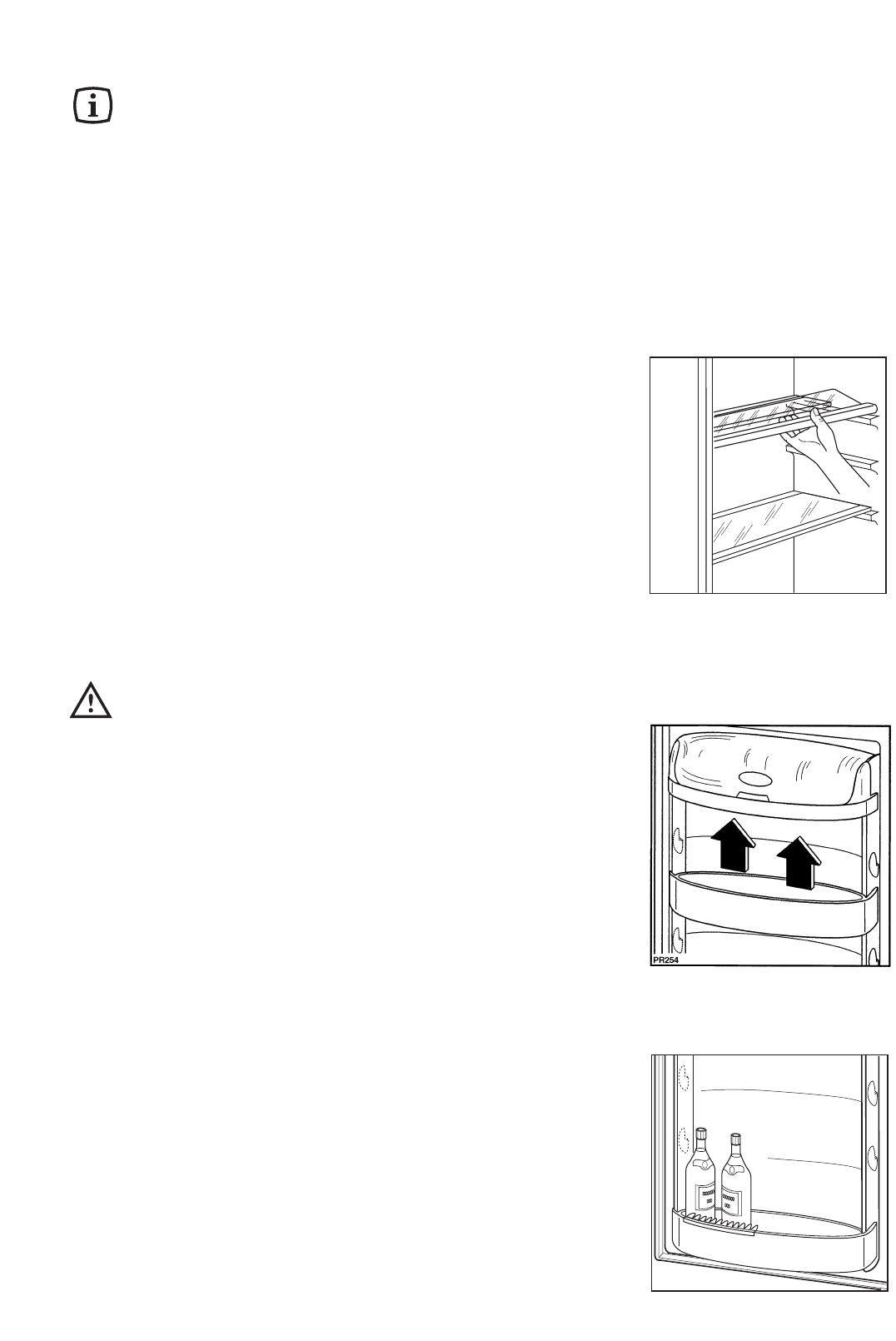
5
Before use
Remove all securing tapes. Wash inside the
appliance with lukewarm water and bicarbonate of
soda
(5 ml to 0.5 litre of water). Do not use soap or
detergent as the smell may linger. Dry thoroughly.
Setting the temperature
The temperature inside the refrigerator is regulated
by a thermostat with 6 temperature positions and
one «OFF» (O) position.
Position 1 = minimum coldness
Position 6 = maximum coldness
Turn the thermostat dial to the required position;
the intermediate position is usually the most
suitable (3-4).
The thermostat setting can vary as the temperature
inside the refrigeration compartment depends on the
following factors:
- room temperature
- how often the door is opened
- how much food is stored
- position of the appliance
Important
If the fridge is not defrosting correctly, it is
possible that because a very low temperature
has been selected, the motor is working
continuously, which prevents the defrost cycle
from operating.
To ensure correct defrosting, a lower number
should be selected on the thermostat and you
should notice that the motor cuts out from time
to time, which is correct.
If you wish to return to a lower temperature,
turn the thermostat to a higher number,
however you should turn the setting lower
occasionally to allow automatic defrosting.
Fresh food refrigeration
To obtain the best performance, do not store warm
food or evaporating liquids in the refrigerator; do
cover or wrap the food, particularly if it has a strong
flavour.
Do not cover the shelves with any protective
material, such as paper, cardboard or plastic, which
may obstruct the air circulation through them.
To help you use your refrigerator correctly, here are
some more useful hints:
Raw meat (beef, pork, lamb & poultry): wrap in
polythene bags and place on top of the salad drawer.
Meat can only be stored safely in this way for
one or two days at the most.
Fruit & vegetables: these should be thoroughly
cleaned and placed in the bottom salad drawer.
Butter & cheese: these should be placed in special
airtight containers or wrapped in aluminium foil or
polythene bags to exclude as much air as possible.
Milk bottles: these should have a cap and should
be stored in the bottle rack on the door.
The walls of the refrigerator are equipped with
runners so that shelves can be positioned as
desired.
The door shelves
To permit storage of food packages of various sizes
the central door shelf can be adjusted in height.
To do this proceed as figure.
For more thorough cleaning, the top door shelf and
the bottle shelf can be removed by pulling them in
the directon of the arrows, then refitting them in
position.
D338
PR250
OPERATION


















